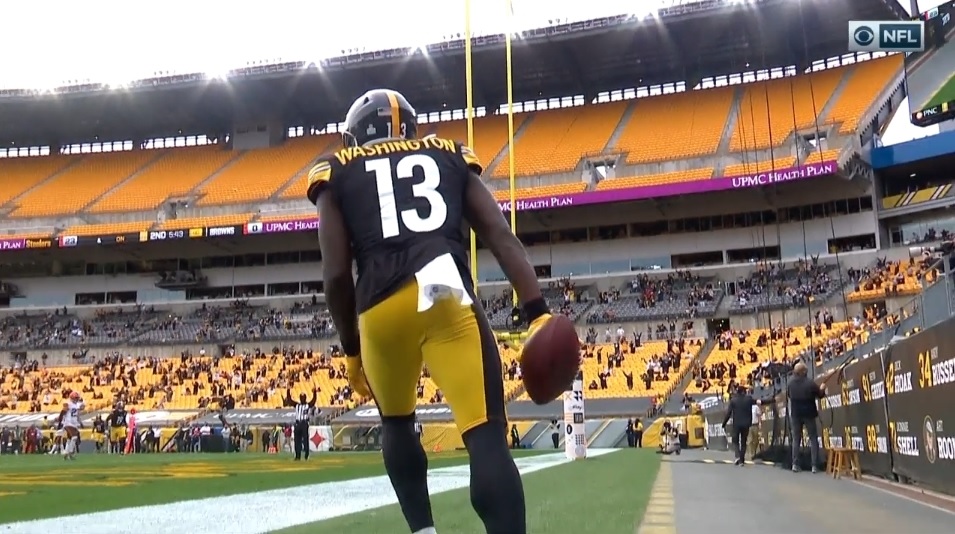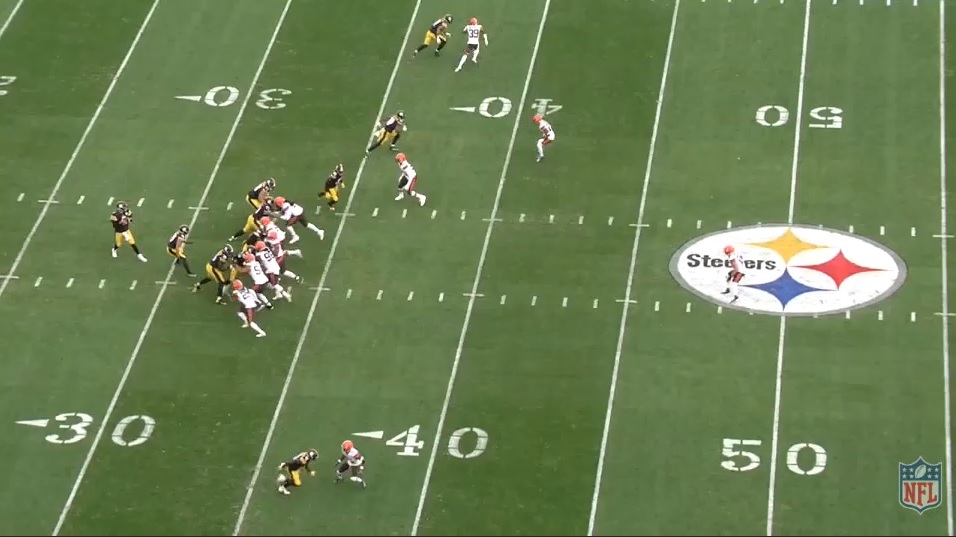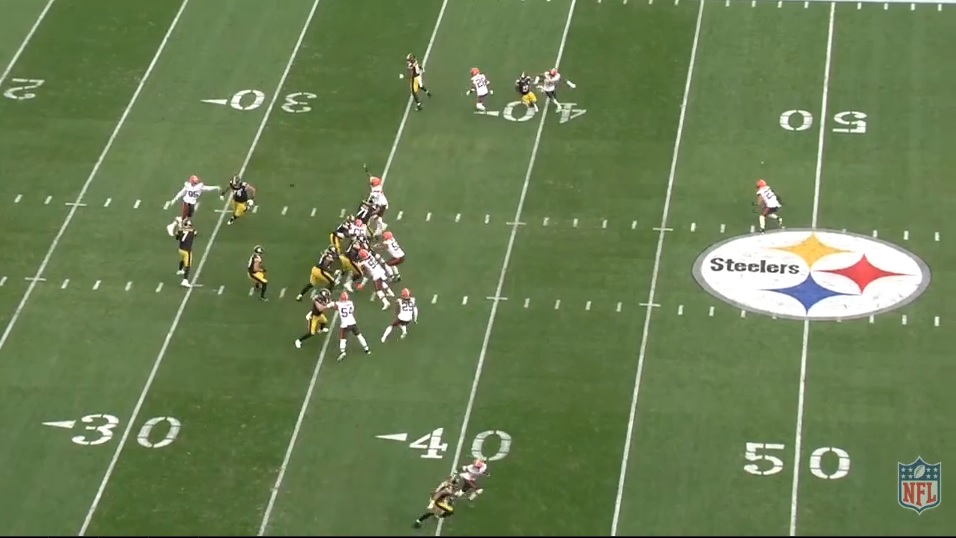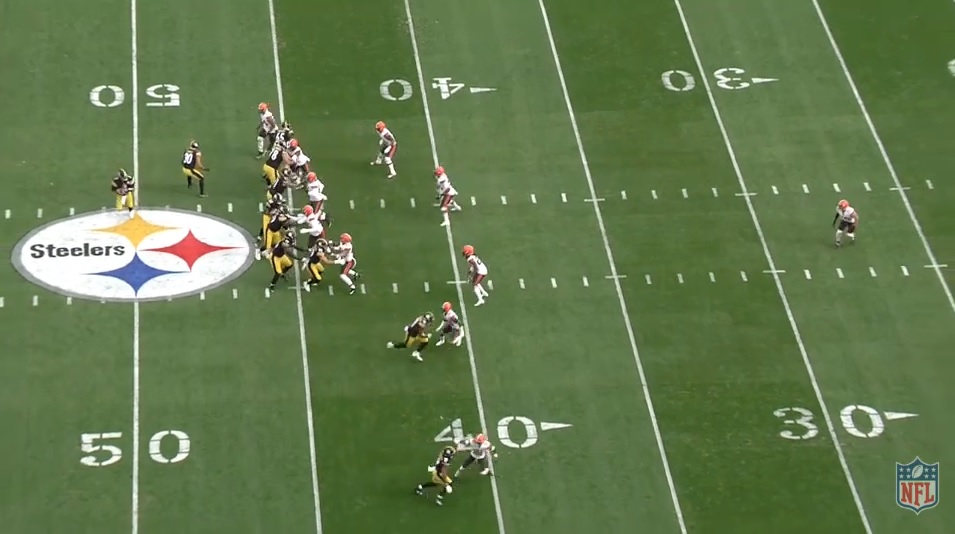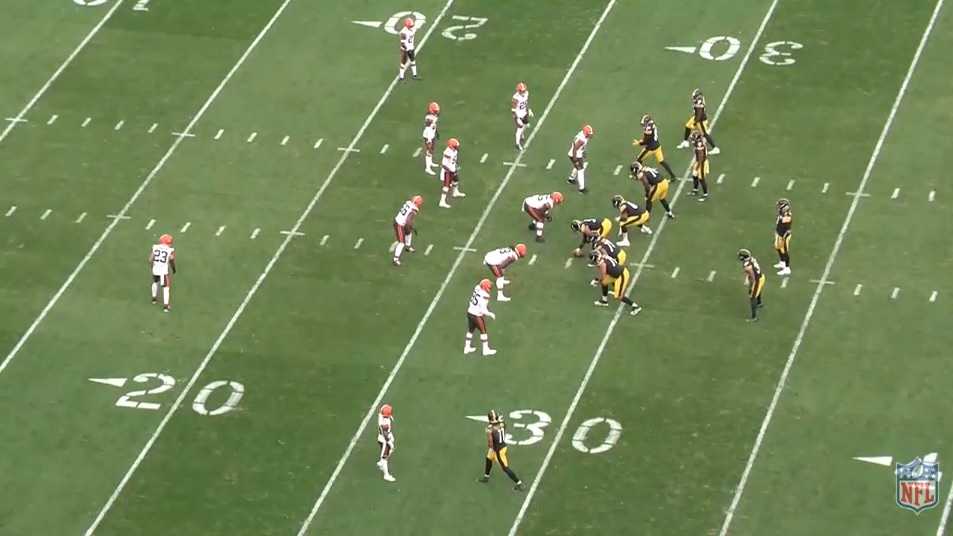Unless a future opponent has a bout of amnesia and simply forgets to field a defense, James Washington won’t have an easier touchdown than the one he recorded in Sunday’s win over the Cleveland Browns. He was left wide open for a 28 yard score that put the Steelers up 24-0, cementing the beginning of their rout in a pivotal AFC North matchup.
So how did Washington get so open? He ran a double-move, an out ‘n up, and left CB Denzel Ward in his dust. The key to making this play work is a good set-up. Let’s check out how Pittsburgh fooled them.
There’s two elements to the play. One, figuring out the Browns’ defensive approach. The other, setting up the double-move.
With the former, the Browns came out playing aggressive. Everyone knew it, everyone saw it. That’s why Ben Roethlisberger was 0/3 on his RPOs to begin the game. Cleveland’s corners played tight, press coverage, taking away short timing routes this offense has thrived on. They wanted to take away the Steelers’ short passing game.
That meant if you were going to have success throwing the football, you gotta go over the top. And that meant setting up the double-move. Two examples we can turn to prior to Washington’s score, both coming in the second quarter.
On 1st and 10 from the Steelers’ 42, the Steelers align in a bunch set. This is FIB or “formation in boundary,” the trips side set to the boundary (closed side of the field/same hash as the ball). From it, Chase Claypool runs an eight yard out route. Pass goes elsewhere, complete underneath to JuJu Smith-Schuster, but it’s on tape.
This time, the RCB plays off and the FS plays on the far hash away from trips.
Couple of plays later. 2nd and 9 from the Browns 49. Same bunch only not FIB, the bunch aligned to the field side. Chase Claypool runs an out in front of Terrance Mitchell, complete for an eight yard gain.
So here’s the touchdown. 1st and 10 from the Browns’ 28. A bunch formation like we saw in the two above examples the completion to Smith-Schuster and Claypool. Bunch is aligned to the field.
Washington runs the five yard out like before and like Claypool did earlier. Ward reads the break and Ben Roethlisberger, who offers a classic pump fake towards the sideline. Ward plants and drives on the out route as Washington completes the double-move and stems upfield. With no safety help over the top, the Browns safety bites on Ebron’s route underneath, Washington is wide open. And it’s an easy TD.
Check out Roethlisberger’s pump fake from the end zone view. One of the best in the biz.
Double-moves are a popular concept in the Steelers’ offense. They’re just hard to see on TV tape unless you know, they work, and receivers get college open. Here’s an example of mirrored double moves in Week 3 against the Texans. Houston’s DBs don’t take the cheese and the pass falls incomplete. Harder to pull these off with a CB in press alignment because he isn’t reading the QB and not as prone to biting on the fake.
As we showed in all three examples out of their bunch set, the CB was playing off coverage. That led him to be manipulated by Roethlisberger’s pump, making the double-move all the more effective.
After the game, Roethlisberger credited Josh Dobbs for suggesting this call. Another set of eyes seeing how the defense is responding and a playcaller in Randy Fichtner listening to any and all ideas. Egos left at the door. Good offenses have top personnel, great offenses have top personnel and schemes, and the best offenses have top personnel, scheme, and constraint players, using one play to set up another. That’s on display here and it led to an easy Steelers’ score.

